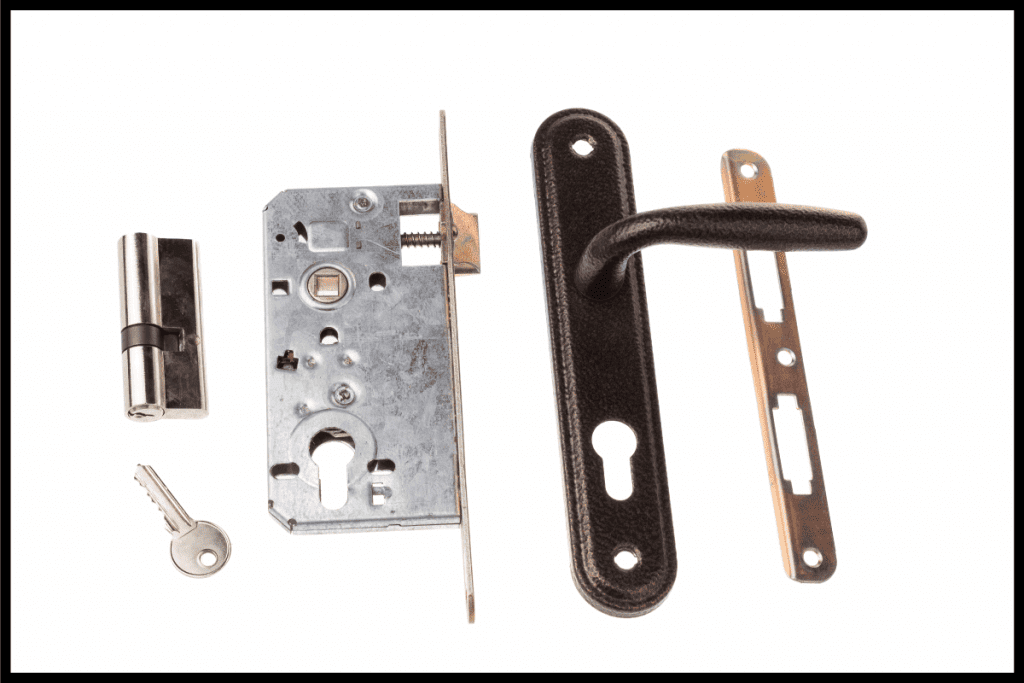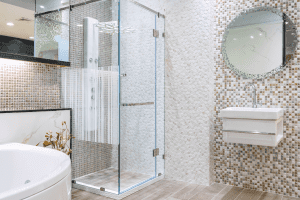Door strike plates are the unsung heroes of home security. These plates act as reinforcements, making sure that the door stays shut and is resistant to being forced open or kicked in. However, there may be times that you need to replace a strike plate, especially if you are upgrading it to a more secure one. How do you remove the old door strike? We have done the research to help you find the answers.
A door strike plate is easily removable. All you will need is a screwdriver to detach all the screws holding the plate onto the door jamb. Once all the screws are off, the strike plate can be pulled out easily. A new strike plate can be installed in its place, or you can fill in the strike plate hole.
Removing a door strike plate is simple. However, the steps after the removal are more complicated. How do you create a notch for a new strike plate? If you are removing the door entirely, how do you fill in the gap left by the plate? Continue reading to learn everything there is to know about removing your door strike plate.

How To Remove A Door Strike Plate
Removing and replacing any door strike plate is easy. All you need is a screwdriver and a few minutes out of your day.
Simply unscrew the old strike plate from the door jamb using the screwdriver. You can now place a new strike plate or cover the hole using wood filler.
When working on your door’s strike plate, it might help to use shorter tools. Using a long screwdriver is not only strenuous in a tight space, but it can also cause you to block the doorway. A shorter tool may help you take up less space and remove the screws easier.
Check out this set of short, right angle offset screwdrivers on Amazon.
Do Doors Need A Strike Plate?
Yes, every door needs a strike plate. A door strike plate’s main purpose is to easily guide the door latch or deadbolt into an exact hole in the door jamb. When the latch fits perfectly, the strike plate keeps the door in a shut position while adding reinforcement to the door jamb.
Modern door strike plates now add more reinforcement to your door jamb. Newer strike plates better reinforce the door jamb, protecting it from breaking when someone tries to force your door open.
If you are looking to add security to your home, you might have thought about storm doors. For more information, you can check this article out: What Is The Best Material For Storm Doors?
Do Door Knobs Come With Strike Plates?
Yes, most companies sell door knobs as a set that includes the handles, latch, and a strike plate.
How Do You Notch Out A Strike Plate?
You can install the door strike plate yourself if your door jamb never had one. All you would have to do is follow a simple process.
First, you will need to determine where to place your strike plate. You can use the template provided with the lock to mark where the latch is.
You can also apply lipstick on the lock or bolt’s end and close the door. It would be best to turn the doorknob a few times to make sure that the lipstick attaches to the door jamb.
Next, place the hole of the plate over the lipstick mark. You should then score the edges of the strike plate using the utility knife, trace the hole of the strike plate, and mark the location of the screw holes.
Then, you should pre-drill the screw holes in the areas you marked. Now, cut the hole for the bolt or latch using a spade bit. The hole you will make should be slightly larger than the bolt but smaller than the hole on the strike plate.
Afterward, carefully chisel out the wood inside the lines you scored. It would be best to make the depth of the chiseled hole the same as the thickness of the strike plate so that it fits perfectly. Test if the recess is deep enough by placing the plate on it now and then.
Next, sand any high spots in the recessed area to prevent the strike plate from being uneven. Lastly, close the door to check if the bolt or latch can extend completely.
If the latch does not fully extend, you can enlarge or deepen the hole. If it fits perfectly, attach the strike plate to the door jamb by using a screwdriver and screws.
How Do You Move A Latch Strike Plate?
If the door’s latch strike plate sags and no longer allows the latch to enter smoothly, you may need to follow a process to realign it. First, you should apply lipstick onto the latch, close the door, and reopen it to see the direction you need to adjust.
Using a chisel, you should chip away at the doorjamb to expand the recess that holds your strike plate. Once the latch strike plate is in position, you should mark and predrill new screw holes.
Screw the latch strike plates in their new place. Afterward, use a wood filler to fill in the gap you left when you moved the door strike.
Deadbolts, like door latches, often misalign over time. If you want to know more about adjusting deadbolts, check out this other post: Deadbolt Not Lining Up – What To Do?
How Do You Fix A Strike Plate Hole?
If you are working to update your doors, you will be left with open strike plate holes. To remove these holes, you will need to fill them in using epoxy wood filler.
First, you should remove the strike plate, screws, and other hardware attached to it. Afterward, sand the rough areas to make them solid enough to hold the epoxy.
After you finish sanding the area, you should clean all the dust out by brushing it away or vacuuming the hole. Now, you will need to mix the epoxy filler according to the directions stated on the package.
Once the filler is ready, place it into the hole in the door jamb. Push it first onto the sides to make sure it sticks, and then add more filling to cover the gap. Scrape across the mortise to remove the excess.
When using epoxy fillers, it would be best to use just the right amount to cover the area. If you use too much, you will spend more time sanding it down.
Once the epoxy cures and dries, you can sand it until the area is flat and even. Seal the epoxy using shellac and then paint the door jamb with whatever color you wish.

In Closing
Removing a door strike plate is easy and you can do it in less than five minutes. All you will need to do is unscrew the strike plate and it falls right off.
There may be times when you will need to do more than replace your plate with a new one. If you are moving your strike plate, making adjustments, or removing it permanently, you will just need a chisel and sandpaper to expand the holes and epoxy wood filling to close cavities.




